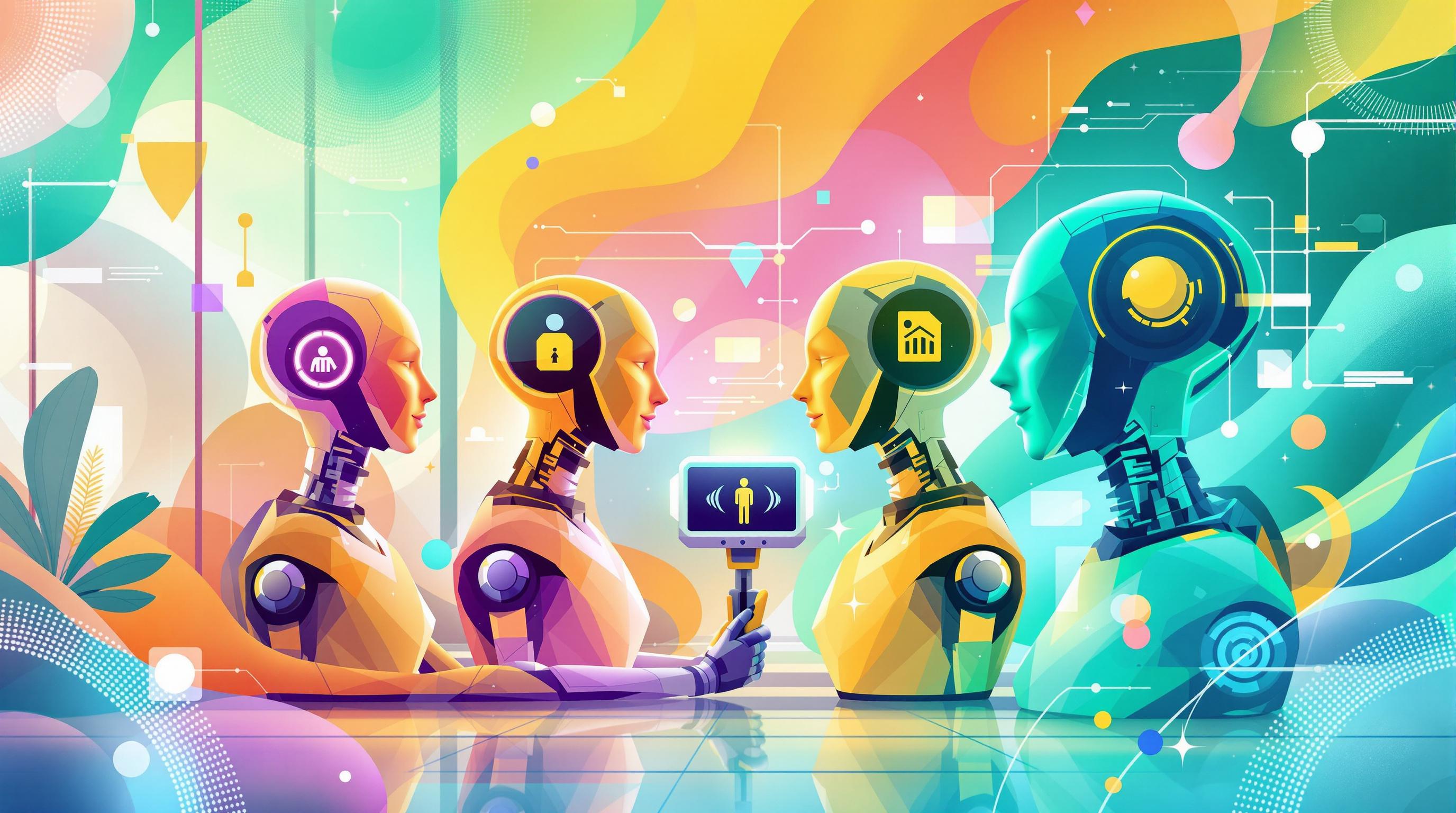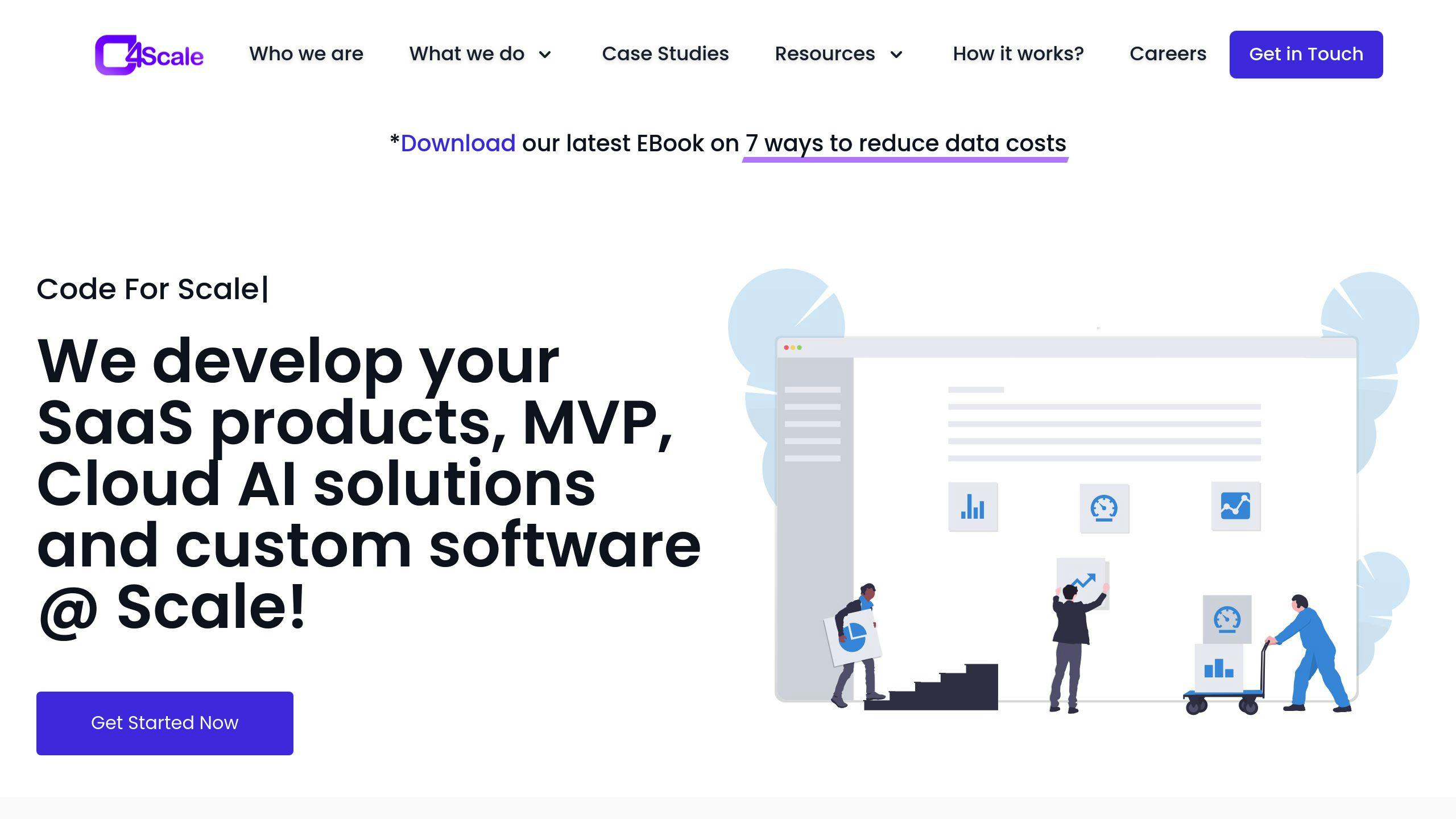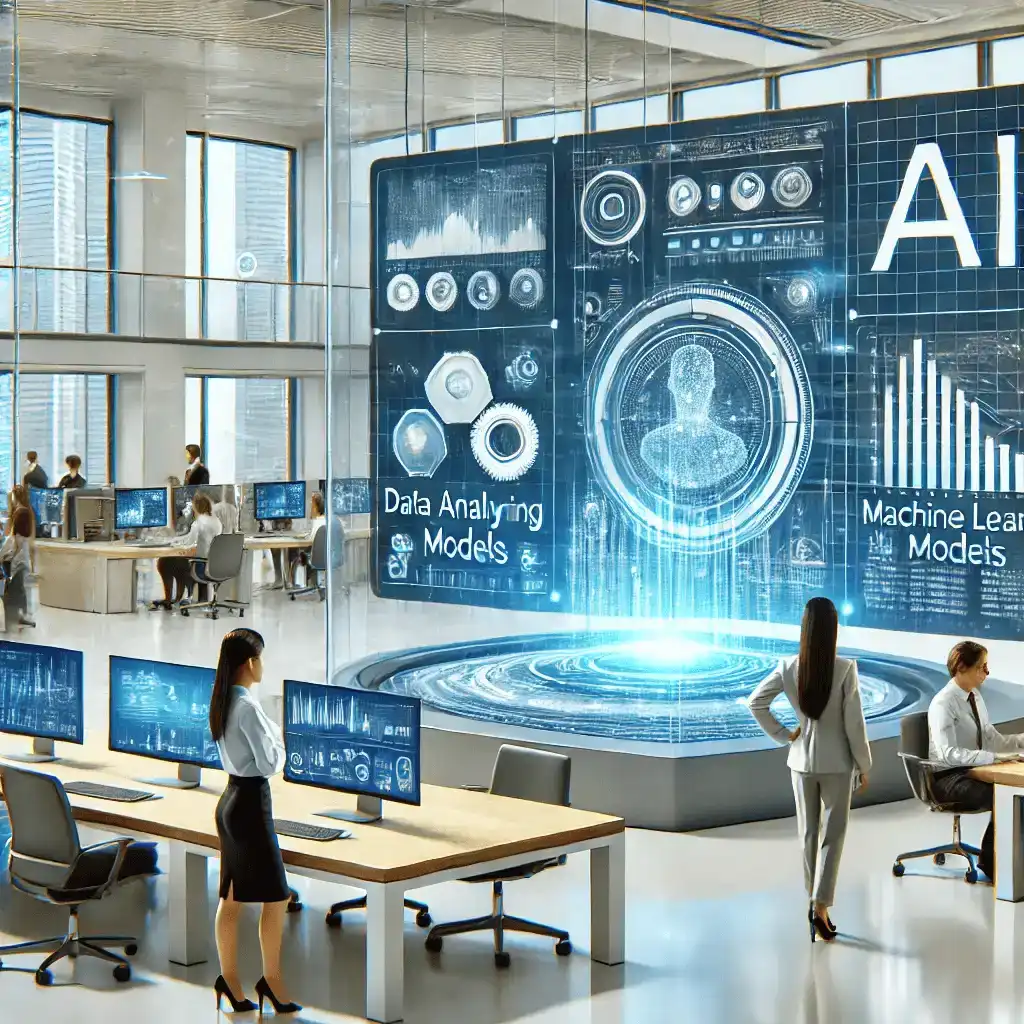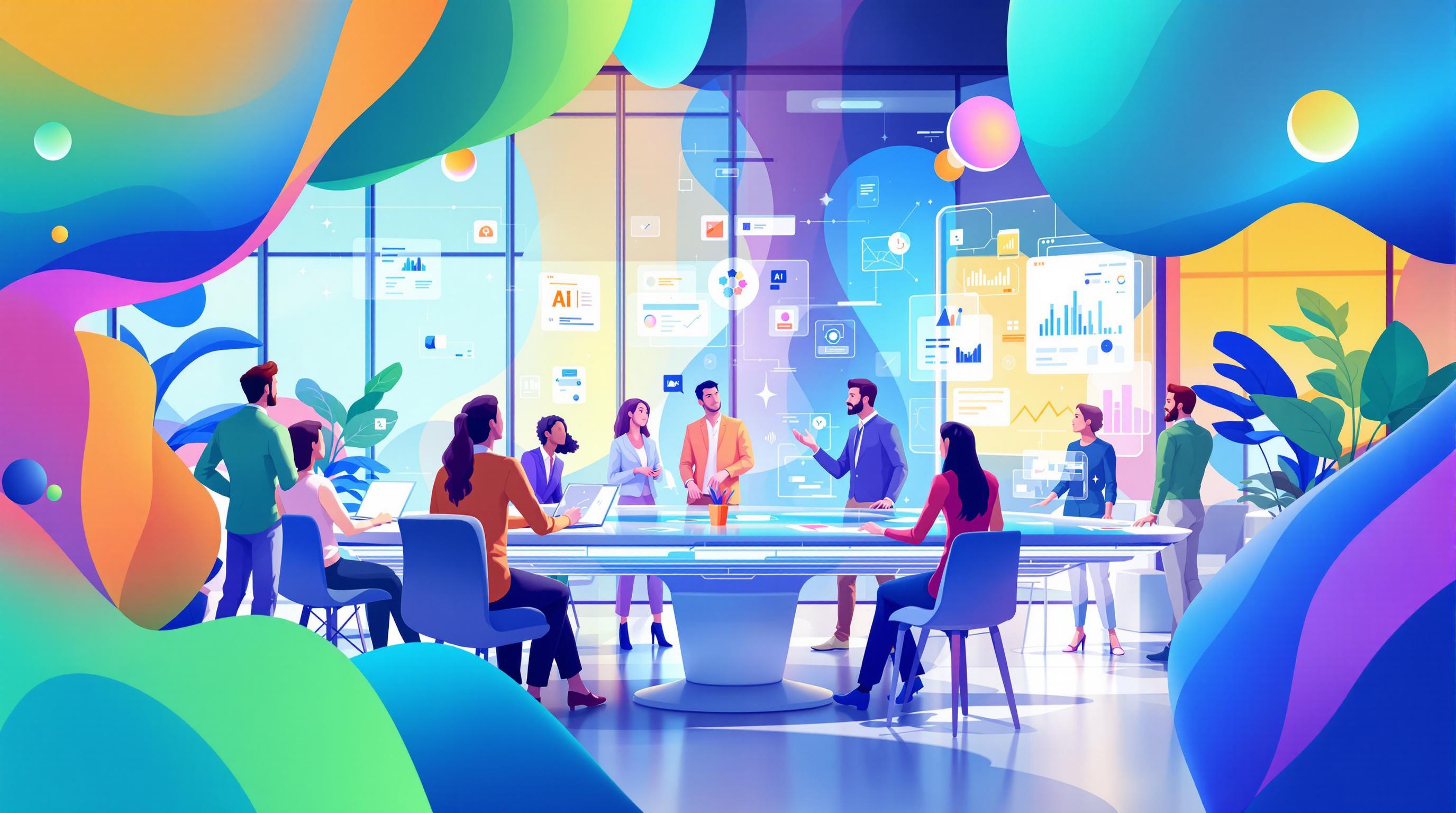
Back to Blogs
Building Enterprise AI Apps with Multi-Agent RAG
Technology
Building Enterprise AI Apps with Multi-Agent RAG
Multi-Agent RAG (Retrieval-Augmented Generation) systems are transforming enterprise AI by using multiple specialized agents to handle tasks like data retrieval, analysis, and response generation. This modular approach improves accuracy, scalability, and efficiency for businesses managing complex workflows. Key benefits include:
- Faster processing: Agents work simultaneously on tasks.
- Improved accuracy: Agents cross-check outputs.
- Flexibility: Easy to upgrade and integrate with existing systems.
- Diverse data handling: Processes both structured and unstructured data.
Quick Overview:
- Use Cases: Customer service, predictive maintenance, fraud detection.
- Core Components: Task management, real-time data handling, agent collaboration.
- Building Steps: Use tools like AWS Bedrock and SingleStore, integrate with legacy systems, and partner with experts for scaling.
- Best Practices: Focus on speed, accuracy, scalability, and security. Regularly monitor and update systems.
This article explores how Multi-Agent RAG systems work, their enterprise applications, and steps to build them effectively.
Key Components of Multi-Agent RAG Systems
Task Management Across Agents
In Multi-Agent RAG systems, task management revolves around assigning specific functions to specialized agents. Each agent focuses on a particular responsibility, making the system more streamlined and easier to manage. This modular setup allows businesses to expand their AI capabilities by simply adding more agents as needed. At the center of it all, an orchestrator ensures tasks are prioritized and agents work together efficiently [1][4].
Real-Time Data Handling
Handling data in real time is essential for making informed decisions and staying ahead in competitive markets. Tools like SingleStore enable fast data ingestion and querying, regardless of whether the data is structured or unstructured. This ensures both speed and accuracy [1].
Here’s how some key components contribute to real-time processing:
| Component | Purpose | Advantage |
|---|---|---|
| Vector Databases | Store and retrieve data quickly | Speeds up query responses |
| Data Streaming | Process data continuously | Provides real-time insights |
| Caching Mechanisms | Access frequently used data fast | Reduces system delays |
Agent Collaboration and Learning
The strength of Multi-Agent RAG systems lies in how agents work together. They share data and adjust their behavior based on interactions, which improves the system's accuracy and relevance over time [4]. This setup ensures that responses are not only correct but also tailored to the specific needs of the business.
As these systems interact with users and gather feedback, they continuously refine their performance. This collaborative and evolving approach is what makes them effective for tackling complex enterprise challenges, as seen in real-world use cases [1].
Building Enterprise AI Apps with Multi-Agent RAG Systems (MARS)
Use Cases for Multi-Agent RAG in Enterprises
Multi-Agent RAG systems are proving to be a game-changer for enterprises, tackling challenges in areas like customer service, manufacturing, and financial security.
Enhancing Customer Service
Multi-Agent RAG systems elevate customer service by utilizing specialized agents to analyze customer data, gauge sentiment, and craft personalized responses. For example, Moveworks Copilot showcases this capability by handling customer queries while incorporating relevant business details [1].
Here’s how it works:
| Agent Type | Function | Outcome |
|---|---|---|
| Sentiment Analyzer | Assesses customer mood | Highlights urgent issues |
| Data Retrieval Agent | Accesses customer history | Adds context to responses |
| Response Generator | Crafts replies | Maintains consistency |
These systems don’t just improve customer interactions - they also bring efficiency to industrial operations, like predictive maintenance.
Predictive Maintenance in Factories
In manufacturing, Multi-Agent RAG systems help prevent equipment failures by analyzing data and identifying potential issues early [1][4]. Agents such as Sensor Data Analyzers, Pattern Recognition Agents, and Maintenance Schedulers work together to monitor equipment, flag anomalies, and schedule maintenance tasks.
This teamwork allows for proactive scheduling and quicker decision-making, reducing downtime and saving costs [1].
Fraud Detection in Finance
Multi-Agent RAG systems also play a key role in securing financial operations. They analyze transactions in real-time to spot suspicious activity [1][4].
"Multi-Agent RAG systems represent a significant advancement in software engineering. By using multiple AI agents, these systems can efficiently manage and execute complex tasks that were previously challenging or impossible for single-agent systems." - Madhukar Kumar, CMO at SingleStore [1]
The fraud detection process involves several layers:
| Detection Layer | Function |
|---|---|
| Transaction Analysis | Scans payment trends for irregularities |
| Behavioral Assessment | Flags unusual user patterns |
| Risk Evaluation | Assesses threats and suggests actions |
These examples highlight how Multi-Agent RAG systems are reshaping industries by handling complex tasks with precision and speed.
Steps to Build Multi-Agent RAG Systems
Now that we understand what Multi-Agent RAG systems can do, let’s look at how enterprises can set them up effectively.
Core Tools and Integration
Building a reliable Multi-Agent RAG system starts with a strong infrastructure and smooth integration. AWS Bedrock provides the essential computing framework, while SingleStore handles parallel processing and data retrieval, making it ideal for enterprise workloads [1]. This setup powers tools like Moveworks Copilot, which processes real-time customer data efficiently [3].
To integrate these systems with existing enterprise setups, it’s important to evaluate legacy systems, create APIs, and optimize data flows. Efficient caching is also key for ensuring smooth performance, even during periods of high demand [1][4].
Some critical steps for integration include:
- Evaluating system compatibility
- Developing APIs to connect with older systems
- Optimizing data flows and implementing effective caching
Partnering with C4Scale for AI Solutions

C4Scale offers custom Multi-Agent RAG solutions designed to fit enterprise-specific needs [1]. Their process starts with proof-of-concept models, moves to pilot implementations, and then scales up. They collect feedback at every stage to align with business goals while ensuring quick deployment.
Their approach includes:
- Rapid proof-of-concept testing
- Easy integration with current systems
- Continuous feedback and refinement
After deployment, it’s essential to fine-tune these systems for speed, accuracy, and scalability to meet the changing demands of enterprises [1][4].
Best Practices for Multi-Agent RAG Systems
Speed, Accuracy, Scale, and Security
When building enterprise AI applications, four key factors often determine success: speed, accuracy, scale, and security. Speed and accuracy directly influence user experience and business outcomes, while scale and security ensure the system remains reliable and can handle growth over time [1]. These factors are especially important for tackling challenges like managing large datasets and maintaining secure operations.
CtiPath provides a great example of how Multi-Agent RAG systems can manage diverse data types securely while adhering to strict security standards [2].
Optimizing Data Flow and Caching
Managing data efficiently is vital for strong system performance. Modern Multi-Agent RAG systems benefit from several key components:
| Component | Purpose | Impact |
|---|---|---|
| Advanced Caching | Avoids redundant data retrieval | Reduces delays |
| Parallel Processing | Handles multiple tasks at once | Boosts system capacity |
| Real-time Analytics | Processes data instantly | Delivers immediate insights |
SingleStore showcases how features like advanced caching and real-time analytics can minimize delays and provide instant insights. Their system handles both transactional and analytical tasks simultaneously, thanks to a modular design that supports flexible workflows and easy scaling [1].
Ongoing Monitoring and Updates
To keep Multi-Agent RAG systems running smoothly, regular monitoring is essential. This includes evaluating decision-making, memory retention, data retrieval, and response accuracy. Feedback loops and performance audits help agents refine their accuracy and relevance over time [5].
Moveworks Copilot is a strong example of this in action. By implementing intelligent query processing and context-aware responses, the system evolves and improves through consistent updates [3].
For enterprises adopting these practices, balancing resource efficiency with performance is critical. Regular audits not only highlight areas for improvement but also ensure the system remains secure as it scales [1].
Conclusion: Multi-Agent RAG for Enterprise AI
Key Takeaways
Multi-Agent RAG systems are changing the game in enterprise AI by breaking down tasks into smaller, specialized roles handled by different agents. This approach improves how businesses tackle complex challenges by combining teamwork among agents, real-time data handling, and automation to streamline operations and decision-making.
Examples like customer service, predictive maintenance, and fraud detection highlight how Multi-Agent RAG is reshaping enterprise processes [1] [2]. The combination of AWS's GenAI Stack and SingleStore's hybrid database technology creates a strong base for building advanced AI-driven solutions.
What Businesses Should Do Next
To successfully adopt Multi-Agent RAG, businesses should start small. Launch a pilot project to assess its potential, focus on preparing high-quality data, ensure compliance with security standards, and set up systems for ongoing monitoring and updates. Partnering with experts like C4Scale can simplify the process and help develop scalable, enterprise-focused solutions.
These systems offer a flexible and scalable model for enterprise AI, similar to how microservices architecture works in software development. Transitioning from traditional RAG to Multi-Agent systems marks a major step forward, improving accuracy, scalability, and resource efficiency [1] [2].
FAQs
What is the difference between naive RAG and agentic RAG?
Naive RAG treats each query as an isolated request, with no connection to previous interactions. On the other hand, agentic RAG uses memory-enabled agents that retain context, allowing for more coherent responses and the ability to handle tasks autonomously. According to Weaviate's research, this approach improves accuracy, enables autonomous responses, and enhances collaboration between humans and AI [6].
Here’s a quick comparison:
| Feature | Naive RAG | Agentic RAG |
|---|---|---|
| Memory Capability | No memory between interactions | Retains context for continuous learning |
| Task Handling | Simple query-response model | Manages complex, autonomous tasks |
| Collaboration | Limited interaction capability | Improves human-AI collaboration |
An example of this advancement is Moveworks Copilot, which demonstrates improved decision-making and better information management [3]. Agentic RAG principles also support Multi-Agent RAG systems, where multiple agents work together dynamically to manage complex, enterprise-level tasks. This makes it an excellent choice for businesses seeking context-aware and scalable AI solutions.
The move from naive to agentic RAG represents a significant step forward in enterprise AI, helping organizations select the right model for their needs, especially when deploying Multi-Agent RAG systems.
Related Blogs

Tech
15 Jan 2025
How Enterprises Innovate and accelerate development with AI
Artificial Intelligence (AI) is no longer a futuristic concept—it's a present reality transforming enterprises across industries. With AI capabilities expanding rapidly, companies are leveraging these technologies to innovate and gain a competitive edge. This article delves into the key trends and technologies driving AI innovation in the enterprise, exploring how AI development companies collaborate with organizations to build intelligent systems that enhance operations, optimize workflows, and extract powerful data insights.

Technology
15 Jan 2025
Maximize Your Generative AI Investment: Practical Strategies for Transformational ROI
Learn practical strategies for maximizing ROI from generative AI by aligning projects with business goals and ensuring scalable systems.
